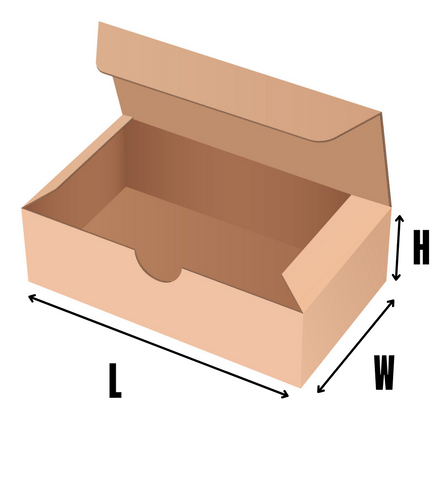Getting packages ready for shipping can be a confusing process the first time you need to do it – especially if you’re a brand new business fulfilling your very first order!
Don’t worry, ‘how to measure a box,’ is not a silly question. Knowing exactly how to measure a box is vital for shipping, because carriers and freight companies will either charge by the dimensional weight (volume) or the actual weight of a package; so you might be asked the dimensions, volume or girth of your package. Knowing these numbers may help you secure better shipping rates or figure out what kind of shipping best benefits your business.
Table of Contents
Once you know how to measure a box for shipping and have secured the best rates, this process will become a straightforward part of your business activities — which is why it’s important to get it right from the jump.
How to measure a box
To measure your package you will need a tape measure or ruler, box, pencil and a piece of paper to mark down the dimensions.
When you measure a box for shipping, you will need to measure the outside dimensions. On the other hand, when you’re purchasing boxes for your business you will want to know the inside dimensions. This makes sure your products fit snugly inside and avoid any damage. Calculating the inside dimensions guarantees little room for movement so your products’ stay safe during shipping and handling.
When measuring the outside dimensions of your box you will need to measure the length, width and height (L x W x H). This is the industry standard order the measurements should be listed in.
How to measure dimensions of a box:
- The first dimension to measure is length. This will be the longest side of the box that has a flap.
- Next is the width. The width side also has a flap, but will be shorter than the length. Turn the box 90 degrees to measure the width.
- Lastly is the height of the package. Height is the only dimension without a flap. Close the flaps of the box and measure the height from top top bottom.

Note: Acceptable manufacturing variance is +/- ⅛ inches.
How to calculate the volume of a box
Calculating the volume of your packages will help determine everything from shipping to warehousing and distribution processes more easily. Calculating the volume is crucial in material and cost optimization.
To calculate the volume of your package for shipping, you will need to times the length by the width by the height.
L x W x H = Volume. For example;
- L = 16in
- W = 12in
- H = 8in

16 x 12 x 8 = 1,536 cubic inches (cu).
How to measure girth of a box
For uniquely shaped packages such as cylindrical boxes (used to ship prints or posters), you may need to calculate the girth. Some carriers require the girth of the box to calculate the cost of shipping.
You can calculate the girth of a box by using the flexible measuring tape to find the distance around the package’s widest point. This measurement is the girth.
To find the girth you will need to measure the width and the height and times by two.
Girth = 2(W + H)
If we use the example from above, we would multiply the width (12 inches) by 2. This would give us 24. Then we take the height (8 inches) and also multiply by 2. This would give us 16.
We then add the results together to get the girth.
- 24in + 16in = 40in.
How to keep shipping costs low
With shipping costs rising around the world, it’s important to keep an eye on changing shipping rates. However there are a handful of tips for small businesses to keep in mind to help maintain the best shipping rates.
- Make sure you are using the right box for your product. If you’re using a large box for a small or lightweight product, you will pay more because of the space the package takes up. A large box leads to a large dimensional weight which will mean a more expensive shipping cost.
- You can reduce the cost of your shipping by re-using old boxes or using “ships in own container” (SIOC) packaging (your product’s packaging is what you add a shipping label to, so you won’t need to pack it in another box). For smaller items you can exchange boxes for poly mailers which weigh much less.
- Check if your ecommerce platform provides any discounted shipping rates. For example, Shopify Shipping helps vendors save up to 88% with discounts on USPS, UPS and DHL.
Discover Cheaper Shipping with Shopify


